Pretoria Travel Guide
Pretoria is a lovely, quiet city of stately old architecture, leafy suburbs and boulevards lined with Jacaranda trees that produce rich purple blossoms every spring (October and November). This is South Africa's administrative capital and, fittingly, its conservative beauty offers quite the contrast with the more chaotic Johannesburg, which is a short 56 mile (90km) drive away.
The city was founded in 1955 and named after Andries Pretorius, the Afrikaner leader at the Battle of Blood River where the defeated the Zulus under King Dingaan. However, since 1994, the city has been known for the iconic Union Buildings where Liberation Struggle icon Nelson Mandela was sworn in as the country's first democratically elected president.
Although Pretoria is, to the surprise of foreign visitors, the capital of South Africa, it is nowhere near as famous as Cape Town and Johannesburg. In reality, several cities in the country essentially divide the various functions associated with a capital city.
Pretoria may not be one of South Africa's most popular tourist destinations, but it makes a fantastic base for a multitude of sightseeing opportunities. The city offers some unique attractions, such as the historic Voortrekker Monument, the South African National Zoological Gardens, and the nearby town of Cullinan where the discovery of the world's largest diamond took place.
If visitors run out of things to do in Pretoria, the proximity of Johannesburg ensures that boredom is not an option. Pretoria offers visitors a unique glimpse into a city brimming with history while simultaneously embracing cultural change.
Things to do in Pretoria
The best sightseeing opportunities in Pretoria involve its historical attractions. As the South African seat of government and the administrative capital of the country, the city has some famous landmarks.
These include the Union Buildings, where visitors can picnic in the lovely grounds and admire numerous monuments and memorials, the imposing Voortrekker Monument, which has been the topic of some controversy in South Africa, Melrose House, a restored Victorian mansion, and Kruger House, which serious history buffs will enjoy.
For those travelling with children, Pretoria is a surprisingly fun city full of family activities. The zoo is a must, and a picnic in the Pretoria National Botanical Garden is a fun excursion. Parents could also start by taking the older kids paintballing. This is a high adrenaline game that involves a fair degree of pain when shot and is not suitable for kids younger than 12.
Another option outside of the city is quad biking, which involves visitors renting mini quad bikes for riding around a large dirt track. It's a fun experience, closely supervised, but is also not suitable for kids under 10. A better bet for younger kids is skating at the Grove Ice Rink.
Of course, the many attractions of Johannesburg are very close by. Another fun excursion from Pretoria is a trip to Cullinan.
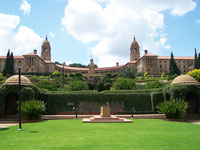
Union Buildings
Designed by renowned South African architect, Sir Herbert Baker, the Union Buildings are located on Meintjieskop hill: a sentinel overlooking the city of Pretoria. They are the official seat of the country's government and house the offices of the South African President and other government officials. The Union Buildings are a South African Monument and have seen such icons as former South African president, Nelson Mandela, inaugurated. The main semi-circular building is considered an architectural masterpiece and is an easily recognisable South African landmark. It is worth seeing and photographing for tourists in the area. With spectacular terraced gardens full of indigenous flora, the Union Buildings are not only historically important, but also rather beautiful.
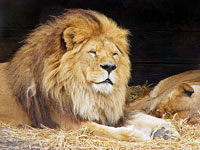
National Zoological Gardens of South Africa
Commonly known as the Pretoria Zoo, the National Zoological Gardens of South Africa is often described as one of the leading zoos in the world. It is the largest zoo in South Africa and the only one with national status. Tickets include a visit to the zoo, an aquarium, and a reptile park. The Pretoria Zoo cares for more than 200 mammal species, more than 200 bird species, around 190 fish species, and more than 90 reptile species. The zoo is known for its large enclosures and animals, which include cheetahs, chimps, lemurs, leopards, rhinos, hippos, elephants, red pandas, koala bears, lions, and tigers. Among other things, the Zoo's Animal and Conservation Department provides high quality and modern facilities for the animal population, and protects their freedoms.
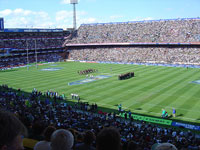
Loftus Versfeld Stadium
A shrine for many of Pretoria's rugby fanatics, the Loftus Versfeld Stadium seats over 50,000 people and was one of the stadiums that hosted matches in the 2010 FIFA World Cup. The land on which the stadium was built was first used for sporting events in 1903 and is named after Robert Owen Loftus Versfeld, who is attributed with establishing organised sport in Pretoria. Loftus Versfeld stadium is home to the Blue Bulls: the local rugby team. Passionately supported by Pretorians, the team has been very successful locally and internationally. The stadium has hosted numerous big sporting events, such as the 1995 Rugby World Cup and the 1996 CAF Africa Cup of Nations.
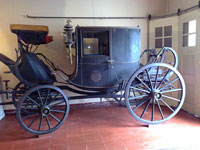
Kruger House Museum
The former residence of Boer leader and President of the Republic of South Africa, Paul Kruger, is now the Kruger House Museum. Built in 1884, the house was the last one in which President Kruger would live before leaving South Africa to go into exile in Europe. Exhibitions in the museum detail Kruger's leading role in the South African War, formerly known as the Anglo-Boer War, against Britain. It also provides information regarding his presidency at a formative and tumultuous period in South African history, and his exile to Europe. Kruger's government used the same site as police headquarters. The house contains some original furnishings from Kruger's residency and some other items from that historical period.
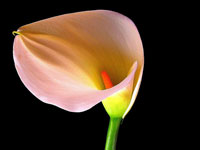
Pretoria National Botanical Garden
Featuring indigenous plants and flowers from all over South Africa, the Pretoria National Botanical Garden bridges the gap between scientific research and recreational garden pleasures. The garden is home to over 198 bird species, a few reptiles and even small mammals such as the adorable duiker. A high quartzite outcrop divides the grounds into two sections: a colder, south-facing section, and a warmer, north-facing section, presenting slightly different natural moods. A paved nature trail provides access to the ridge, which boasts a wonderful diversity of indigenous flora and fauna. More than half of the total area is dedicated to landscaped garden, using almost exclusively South African vegetation, including 50 percent of the country's tree species. The garden includes several distinct biomes, with savanna and forest sections.
Getting Around
Pretoria is a bustling city with limited safe and convenient public transport. City transport consists of an unreliable bus network and a series of minibus taxi routes, neither of which operate much after dark.
The quickest and cheapest way to get around is on a minibus taxi, which is an informal bus service that goes everywhere but has no schedule or formal stops and can be picked up at taxi ranks or hailed anywhere along its route.
Dangerous driving, overcrowding and high crime rates at taxi ranks have deterred many from using them as a means of transport. If necessary, visitors should use them for short hops only and never with baggage. Metered taxis or Uber services are safer but far more expensive. The best way to get around is by private car as there's an excellent network of highways and well-maintained roads.
There are a number of car rental agencies, with most requiring drivers to be over 23 years old and to hold a full driving license. A passport and credit card are also necessary. However, some may have additional stipulations applied to younger drivers.
Drivers should keep their windows up and doors locked at all times, never leave anything visible in a parked car, and never stop for hitchhikers. They should be aware that there is a risk of car hijacking and remain alert, especially when leaving or returning to the car, and seek out secure parking.
The high-speed rail link called the Gautrain connects Pretoria, Johannesburg, and OR Tambo International Airport, and provides the perfect means of transport between the two cities.
Pretoria Climate and Weather
Pretoria has a dry subtropical climate, with long, hot, and rainy summers and short, cool, and dry winters. Pretoria is situated in a valley, which ensures that the weather is generally hotter than one might expect considering the high altitude.
In summer, between November and February, the average temperatures in Pretoria range between 64F (18C) and 84F (29C), and in winter, between June and August, the average temperatures range between 41F (5C) and 66F (19C).
Like Johannesburg, between the months of October and April, Pretoria experiences frequent heavy afternoon thunderstorms with downpours of rain that disappear as quickly as they arrive. These storms come as a relief from the heat and are generally not much of a hindrance to travel.
Winter days are only slightly cooler than the pleasant summer average temperatures, but it can become frosty on winter nights. There is virtually no rain during the winter months and snow is extremely rare. The best time to visit Pretoria is in the shoulder months of spring and autumn, but the hot, rainy summer is also pleasant.
South Africa travel info
Electricity
The electrical current is 230 volts, 50Hz. Round, three-pin plugs and round, two-pin plugs are standard.
Language
South Africa has 11 official languages, including Afrikaans, English, Xhosa, Zulu, and Sotho. English is widely spoken.
Money
South Africa's currency is the Rand (ZAR), which is divided into 100 cents. Money can be exchanged at banks, bureaux de change, and the larger hotels. ATMs are widely available and major international credit cards are widely accepted. Visitors should be vigilant when drawing cash from ATMs, as con artists are known to operate there. All commercial banks will exchange foreign currency. hello
Tipping
Tips of at least 10 percent are expected for good service if a service charge is not included in the bill. Tipping for services rendered is widely anticipated by porters, taxi drivers and petrol attendants. Golf caddies should be tipped accordingly. 'Car guards' operate in the city centres and tourist spots and will offer to look after parked cars; they are usually immigrants from neighbouring countries looking for work and will expect anything from ZAR 8 upwards on the driver's return, depending on how long the driver will have been away.
Health
Travellers from areas infected by yellow fever must carry a vaccination certificate; otherwise no vaccinations are required. There is a malaria risk in the low-lying areas of the Northern Province and Mpumalanga (including the Kruger National Park), as well as northeastern KwaZulu-Natal, and precautions are advised when travelling to these areas, especially between October and May. Vaccinations are recommended for hepatitis A, hepatitis B and typhoid. Tap water is generally safe in urban areas but sterilisation is advisable elsewhere. Medical facilities in South Africa are good in urban areas, but medical insurance is strongly advised as private hospitals expect cash up front and public hospitals are best avoided. Medication is readily available in major cities, but those travelling outside of these centres for an extended period should bring a basic supply kit for emergency self-treatment.
Safety
It is worthwhile noting that the South African authorities give high priority to the protection of tourists and that, although crime rates are high, popular tourist sites and the main hotel areas tend to be safe. Still, travellers should remember that violent crime tends to be concentrated in pockets throughout the country and travellers should do some research to find out which areas to avoid. For instance, Berea and Hillbrow in Johannesburg are high-risk areas, and township areas in general are dangerous for foreigners.
There is a risk of petty, opportunistic crime in all urban areas and armed robberies are fairly common in Johannesburg. Travellers should always be aware of these risks and exercise the necessary precautions. Carjackings and smash-and-grab robberies are common in major cities. Doors should be locked when driving; bags and valuables should be kept out of sight. Travellers should not walk alone at night in any area, and should be vigilant when using ATMs. They should not display signs of wealth (mobile phones, money, expensive jewellery, cameras) on the streets. Credit card fraud is on the increase, meaning travellers should be vigilant and never allow their card out of their sight.
Nationwide power cuts (loadshedding) take place regularly, occurring many times a day for multiple-hour stretches. There is some risk that outages might interfere with telecommunications and security systems, hotels and other accommodations, as well as public lighting and traffic lights. Visitors can plan for power cuts by asking their accommodation provider how they mitigate loadshedding, and by checking planned power outages on the Eskom website or loadshedding apps. They can also carry a power bank with extra charging cables for electronic devices they need, and pack portable lighting such as torches.
Local customs
South African culture and etiquette in urban areas is very Western. While standards of dress vary, beachwear should generally not to be worn off the beach, and nude sunbathing is only permissible in a few designated areas. Homosexuality is legal and accepted in urban areas without much fuss, but is frowned on by some conservative South Africans and can be a problem in township areas. Although locals may complain loudly about the country and government, they will take offense if a foreigner is critical. Racism is a sensitive issue; however, interracial relationships are now common and widely accepted. South African racial terminology differs from what is acceptable in North America. The terms 'black' and 'white' are appropriate for those of African and Caucasian descent, respectively. 'Coloured' refers not to black Africans, but those of mixed African and European descent and is not considered an offensive term. South Africans are friendly and hospitable, and will often go out of their way to assist tourists who need help.
Doing business
Business practices in South Africa are influenced by South Africa's range of ethnicities, languages and even geographical areas, but in general follow common patterns. When doing business in South Africa it's important to be culturally sensitive and as understanding of colleagues' historical context as possible. Most South Africans prefer to do business with contacts they've met before, but they are also warm and open to newcomers. Working to build and maintain business relationships is vitally important in the South African business environment. South Africans are renowned for their friendliness, which generally supersedes business formality.
Most large corporations, as well as the banking and financial sector, still adopt relatively formal business practices, whereas other companies and work environments enjoy more relaxed and personable atmospheres. Clear management hierarchies and respect for senior executives and colleagues are of paramount importance. However, business exchanges and decision-making processes often take on an egalitarian aspect. As with most countries, punctuality is highly regarded, though government officials are notorious for their tardiness when it comes to keeping time. Dress codes tend to be conservative, but not overly formal. Suits are the exception more than the rule, but dressing stylishly will always count in a visitor's favour. It's best to dress formally for initial meetings.
South Africans value hard work and respect those who succeed, but are mindful of other aspects of life such as healthy living, family and nurturing relationships, all of which add up to a well-balanced life. Generally South Africans are regarded as relaxed and informal with regards to introductions and the handling of business cards. Shaking hands is common for both men and women. The giving of gifts is uncommon and unnecessary.
The official language of business in South Africa is English, and business hours tend to start at 8:30am or 9am and the day comes to a close at 5pm, or later in the major urban centres. Working over weekends tends to be quite rare in South Africa.
Duty free
Travellers to South Africa do not have to pay duty on 200 cigarettes, 20 cigars and 250g of tobacco; 2 litres wine and 1 litre spirits; perfume up to 50ml and 250ml eau de toilette; and other goods to the value of ZAR 5,000 per person.
Communications
The international access code for South Africa is +27. Mobile phone networks are available across the country, and there are roaming agreements with most international mobile operators. Mobile service providers offer very cheap 'pay-as-you-go' SIM cards, which are a good option for visitors staying for some time. Alternatively, travellers can use eSIMs if their cellular providers support it on their networks. WiFi is easily available, especially in the larger cities.
Passport & Visa
Passports should be valid for at least 30 days beyond the period of intended stay. An onward or return ticket is required, as is evidence of sufficient funds. Extension of stay for an additional 90 days is possible if travellers apply at least 60 days prior to the expiry date of their visa, permit or visa exempt period. There are special requirements for travelling to South Africa with children under the age of 18, and different requirements for unaccompanied children entering the country. Travellers should consult the nearest South African high commission or embassy for details. It is highly recommended that travellers' passport have at least six months' validity remaining after the intended date of departure from their travel destination. Immigration officials often apply different rules to those stated by travel agents and official sources.
Entry requirements
United States nationals need a passport valid for at least 30 days beyond intended travel. A visa is not required for stays of 90 days.
UK nationals need a passport valid for 30 days beyond the date of intended travel, but no visa is needed for stays of up to 90 days.
Canadian nationals need a passport valid for 30 days beyond the date of intended travel, but no visa is needed for stays of up to 90 days.
Australian nationals need a passport valid for 30 days beyond the date of intended travel, but no visa is needed for stays of up to 90 days.
Irish nationals require a passport valid for 30 days beyond intended travel, but no visa is needed for stays of up to 90 days.
New Zealand nationals require a passport valid for 30 days beyond intended travel. A visa is not required for stays of up to 90 days.
Useful contacts
South African Tourism, Johannesburg: www.southafrica.net
Emergencies: 10111 (Police), 10177 (Ambulance), 10112 (cellphone emergency number).Embassies / consulates in other countries
South African Embassy, Washington, United States: +1 202 232 4400.
South African High Commission, London, United Kingdom: +44 20 7451 7299.
South African High Commission, Ottawa, Canada: +1 613 744 0330.
South African High Commission, Canberra, Australia (also responsible for New Zealand): +61 2 6272 7300.
South African Embassy, Dublin, Ireland: +353 1 661 5553.
Embassies / consulates in South Africa
United States Embassy, Pretoria: +27 12 431 4000.
British High Commission, Pretoria: +27 12 421 7500.
Canadian High Commission, Pretoria: +27 12 422 3000.
Australian High Commission, Pretoria: +27 12 423 6000.
Irish Embassy, Pretoria: +27 12 452 1000.
New Zealand High Commission, Pretoria: +27 12 435 9000.



